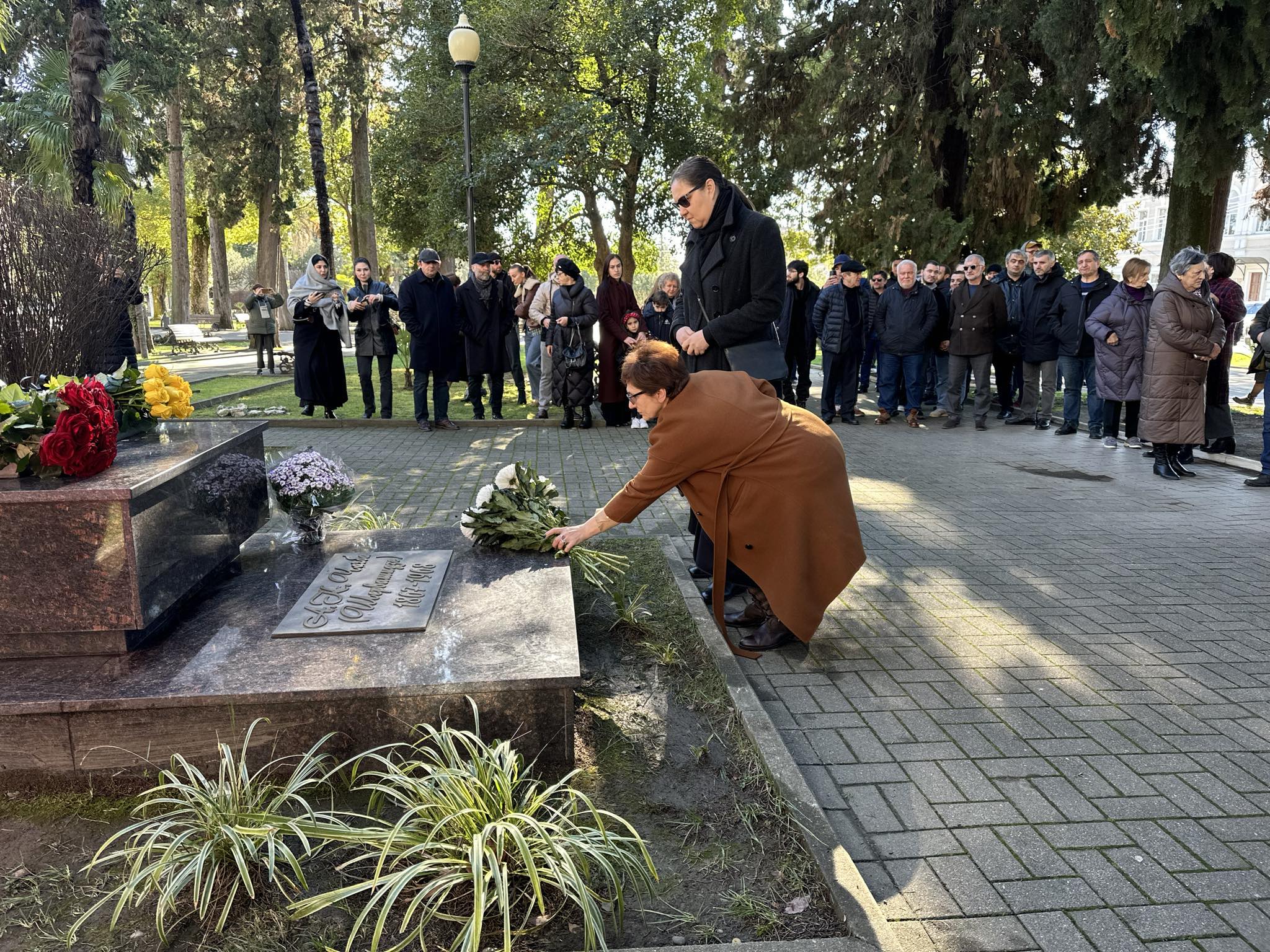How the entire fund of Abkhazia national painting was destroyed in one night. What to do now?
Fire in the Art gallery in Sukhum
On the night of January 21, a fire broke out in the building of the Union of artists of Abkhazia, which housed the Abkhaz National art gallery in Sukhum.
The building caught fire around four in the morning. By seven o’clock, the fire had already been localized. Those three hours were enough for Abkhazia to be virtually left without its visual arts fund. Almost 4,000 canvases were burned, including the “golden fund” of Abkhaz artists.
The investigation has not yet determined the cause of the fire in the building on Lakoba Street, in the center of Sukhum.
The fire mainly damaged the second floor, where the National art gallery’s fund was located, containing more than 4,000 pieces. The central exhibition hall was on the first floor of the building. It was not touched by the fire, but several tons of water caused significant damage, and now it is not functioning.
The prosecutor’s office is investigating the causes of the fire. In the statements from this authority, it was mentioned that all versions are being considered, including arson.
While there is no official version yet, various theories are circulating in society. The most actively discussed theory is that the fire started from the office of a bank adjacent to the art gallery. This is mentioned in conversations with us by nearby residents, the artists themselves who demand an independent examination, and even some rescuers.
However, for now, all these discussions are somewhat subdued.
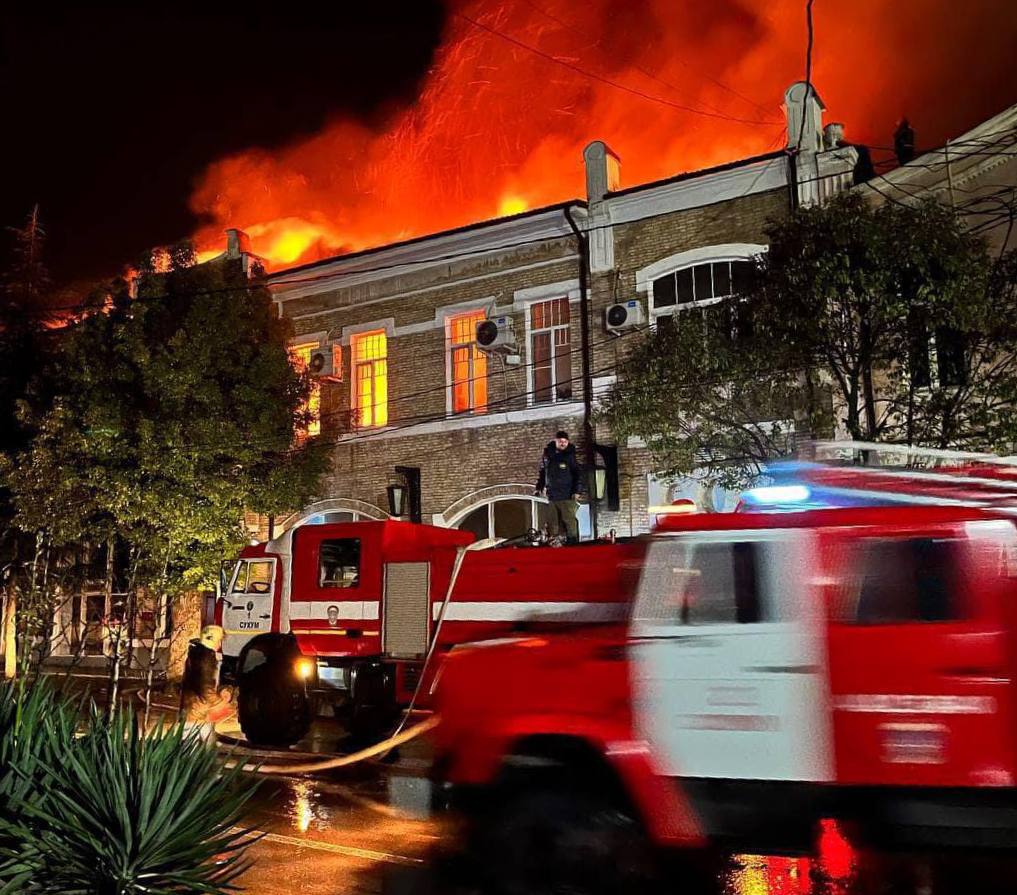
Vitaly Dzhenia, the chairman of the Union of artists, tells JAMnews that despite the generally depressing state of the art gallery fund’s premises, fire safety was regularly checked.
“We even completely updated the wiring a few years ago,” he says.
Gallery staff also told journalists that the fund’s keeper would always turn off the main switch every time he left his workplace, even if he just went down to the store for water.
However, many in society, as well as analysts, believe that the negligence of officials, both current and from the previous government, played a decisive role in the fire at the National Art Gallery in Sukhum.
Society blamed the authorities for their inaction and for effectively leaving the entire art gallery fund in danger, as the paintings were stored in an unsuitable space.
“The paintings were stored under incorrect conditions. They shouldn’t be stored like that; there should be special conditions, which were absent – and this is a lapse by our state. And no government over many years has done anything to change this situation,” declared Temur Gulia, leader of the veteran organization “Aruaa,” to a reporter from “Caucasian Knot.”
Political scientist Natella Akaba noted that the fire was “a shock” for many people in Abkhazia, including herself. “The gallery was an important part of Abkhazia’s national culture. It contained and mostly lost the paintings of leading Abkhaz artists,” she told a “Caucasian Knot” correspondent and suggested that the fire could have occurred due to regular power outages in the republic.
The Art gallery building
The issue of the paintings being stored in an unsuitable building was constantly raised, especially since there was already a fire in the gallery in 2014, but it was quickly localized.
In 1999, another, more spacious building on Pushkin street was allocated for the art gallery, but it is in a deplorable state and has not been repaired over all these years.
Journalists have produced many reports on this issue. Suram Sakania, the director of the art gallery, has repeatedly called for help, explaining that the paintings are arranged on the floor in two rooms, cramped on shelves, and even in the corridor, as there is not enough space.
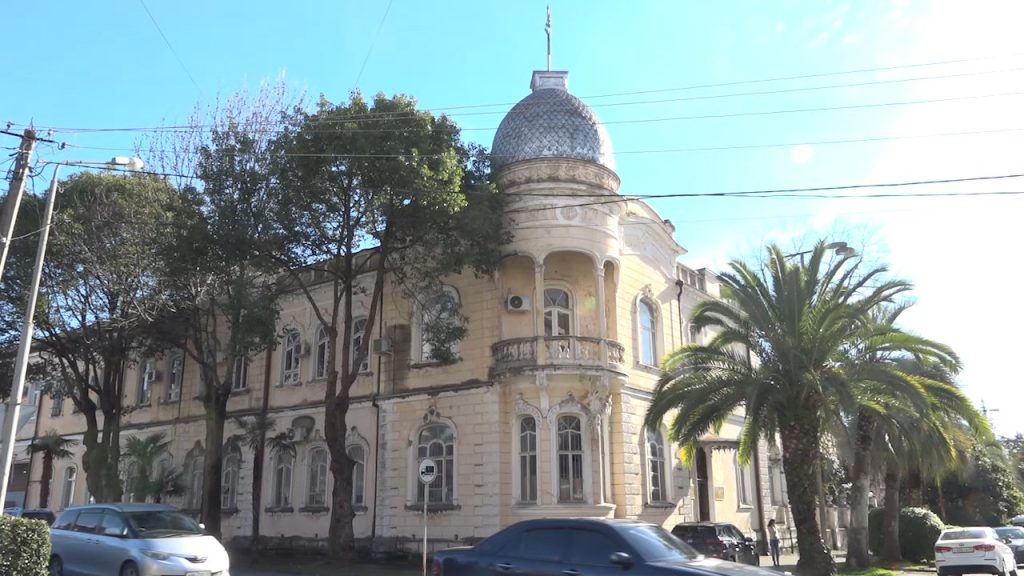
At the opening of exhibitions, Sakania constantly reminded that the art gallery was in a dire state.
“Letters and requests were sent to various departments. Everything remained without response,” he says.
Ministers of culture and their leaders periodically came to inspect the premises themselves and promised to somehow resolve the issue.

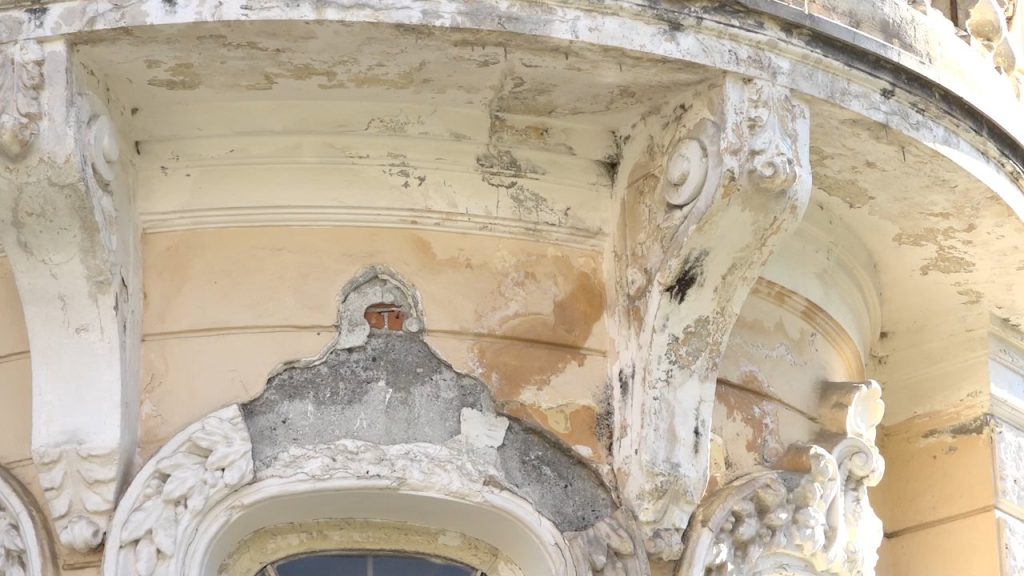
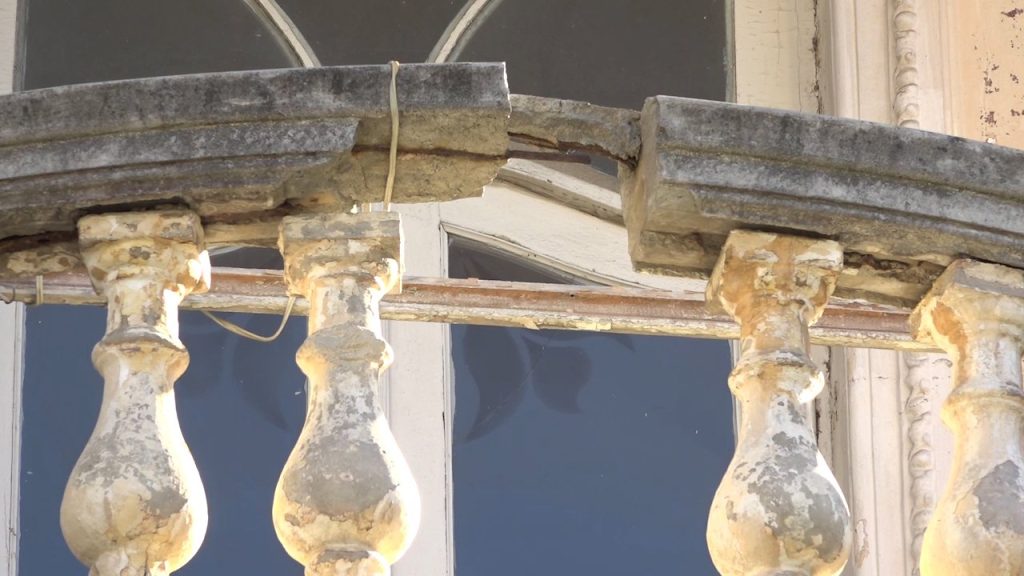
But everyone was too late.
Scientist Vyacheslav Chirikba reminded on his Facebook page that in 2023 he had appealed several times to the authorities of Abkhazia with a request to move the works of the artist Alexander Shervashidze to a safer place.
“In 2014, when there was already a fire in the ‘storage,’ I directly said that next time we might not be so lucky, and we would lose our treasure, and that a fire in the storage was only a matter of time. But nothing was done.”
Who is Alexander Shervashidze-Chachba, for whose works all of Abkhazia is mourning
“Any cultural memory is held up by names,” explains Elvira Arsalia, director of the Central exhibition hall, former minister of culture, and author of a series of programs about the works from the funds of the National art gallery, “and the main such name associated both with the art gallery and with the visual arts in Abkhazia is Alexander Shervashidze-Chachba.“
Alexander Shervashidze-Chachba is the first professional Abkhaz artist and the main pride of Abkhaz art.
Among the 4,000 works stored in the funds of the art gallery, about 300 were authored by Alexander Shervashidze-Chachba. All of them were destroyed.
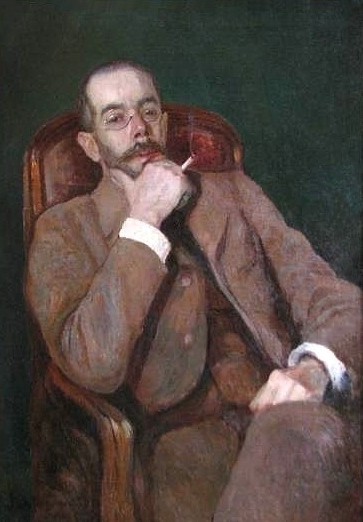
Shervashidze is the Georgian form of the surname Chachba, which became established in the written tradition of Georgia from the late Middle Ages. Prince Alexander Shervashidze-Chachba was the great-grandson of the ruler of the Abkhazian principality, Keleshbey Chachba.
This master had an interesting fate — having received professional education in Kyiv, Moscow, and Paris, the artist worked in St. Petersburg as a decorator for the Petersburg imperial theaters. His first work on stage was the set design for Gounod’s opera “Faust” for the Mariinsky Theater.
In 1920, the artist received an invitation from the most famous theatrical figure Sergei Diaghilev, creator of the famous ballet enterprise “Russian Seasons,” to work as a scenographer in his ballets.
In 1956, an obituary for Alexander Shervashidze-Chachba appeared in the Georgian magazine “Drosha.” Two years later, this article fell into the hands of the artist himself, and then he wrote a response: “I correct a small inaccuracy: I am still alive, to my surprise, not sick and living completely alone. …Everything I have, I am ready to give to museums in Tbilisi and Sukhum.”
Following this letter, 500 works by Alexander Chachba-Shervashidze arrived in Tbilisi. Some time later, 220 of these works were delivered to Sukhum.
He spent most of his life abroad, but did not lose his attachment to his homeland.
On the photograph of his wife, who died in Cannes in 1948, he wrote: “…Can I ask to transfer the body to Abkhazia if possible?”
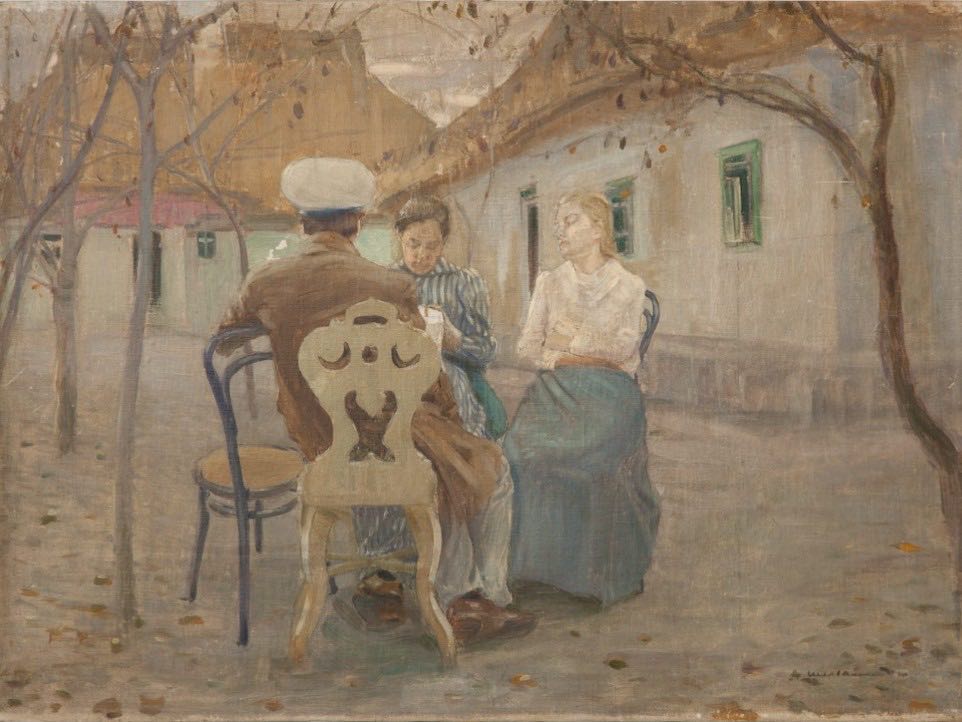
In May 1985, his ashes were brought from the Russian cemetery in Nice and reburied in Sukhum on May 12th in a solemn ceremony.
Symbolically, it was on the day of his reburial that the Sukhum picture gallery, located in this now burnt building, was opened. Previously, it had been located elsewhere.
Now, Abkhazia has lost almost all of Shervashidze-Chachba’s works.
“The last exhibition we held in this hall was essentially his autobiographical narrative. It had everything: the Abkhaz period of the 1920s in Sukhum, the 1930s, the first Paris period, the second. There were works from his time as a stage designer in the imperial theaters,” says the art historian.
Losing Shervashidze-Chachba’s works, Abkhaz art lost a vital thread of connection with the global culture:
“We had names that connected us with the global artistic culture. Undoubtedly, Alexander Shervashidze-Chachba was one of those names. Because we had his collection in the picture gallery, we were included in a very important global museum registry,” explains Elvira Arsalia.
The things that can still be saved
After the fire that destroyed almost all the exhibits of fine arts of this small republic, the discussion on how carefully the Abkhaz treat and handle their cultural and historical heritage has reignited.
Abkhaz cultural institutions were mostly included in one investment program or another over the years and were restored with financial aid from Russia.
This includes theaters, philharmonics, and cultural houses.
However, not all sites have been restored.
As JAMnews was told by the ministry of culture, there are a total of 1,535 objects in Abkhazia that are listed as state historical and cultural heritage. A large portion of them is in a deplorable state, mostly abandoned or partially abandoned sites.
But there are some particularly egregious cases. For example, the Abkhaz Institute of humanities. This building, constructed in 1912, is a real monument of architecture and history in Abkhazia.
The building’s facade, including the beautiful vases on the fence, has been well-preserved up to now. The ancient wooden door of the main entrance, the exquisite shape of the window frames, and the elegant tiles that are still present in the building, not to mention the painted walls.
All these deserve the most careful treatment and preservation during any restoration.
However, right now, the building is literally falling apart – not just lacking restoration but even basic ‘life-sustaining’ actions haven’t been carried out for a long time.
Moreover, it is unsafe even for the employees who work in this building. It is the main research institution in the field of Abkhaz language and culture. Today, the institute’s employees are working on further developing Abkhaz studies. Since the post-war period, about 400 books have been published by this institute, including monographs, collections of articles and materials, textbooks, and teaching aids for schools and universities in Abkhazia.
After the fire in the picture gallery, a report aired on Abaza-TV in which employees talked about their working conditions and requested attention to this historical object, “which we might just lose one day.”
The house-museum of Abkhaz literature is also in a dilapidated state.
This year, Abkhazia is commemorating the 150th anniversary of the birth of Dmitry Gulia, the founder of Abkhaz literature. From 1912 until the end of his life, the national poet of Abkhazia, the patriarch of Abkhaz national literature and culture, Dmitry Gulia, lived in this house with his family.
The museum houses lifetime editions of Gulia, manuscripts of several works, his personal belongings, letters, his portraits and busts, family photographs, and photos of numerous guests – famous Abkhaz and Russian writers and cultural figures.
All this is a significant fund of Abkhaz history and culture.
This year, the government planned events to commemorate the anniversary date; however, Dmitry Gulia’s granddaughter, Tatyana Georgievna, appealed to the government asking not to spend money on celebrations but to allocate it for the repair of the old building.
“The building, which is over a hundred years old, needs repairs… Considering that a tragedy recently occurred in the storage of the Union of artists of Abkhazia, not just cosmetic repairs are required, but also the replacement of electrical wiring. There is a big problem with the preservation and restoration of manuscripts and books… It would be very sad if, after the fire in the gallery, God forbid, we lose this house too, where very valuable documents and various exhibits for Abkhaz culture are stored,” said Tatyana Gulia.
What the authorities have already promised – is this an ok subheading?
Elvira Arsalia, who led the ministry of culture for six years, stated that there were several attempts to include the building of the National picture gallery, located on Pushkin street, in the budget or investment program, but they were unsuccessful.
“The explanation was that the investment program was focused on infrastructure, and cultural constructions were on hold.”
Following the fire, authorities have made several decisions. First, they promised to repair the second floor of the building on Pushkin Street – the very one allocated back in 1999. Second, they committed to fixing the roof of the Union of artists building and helping the Central exhibition hall to restart operations.
Now, Elvira Arsalia believes it is crucial not to abandon the essential idea of the National picture gallery, despite all losses.
“While there is such synergy… Everyone wants to contribute something, donate to the picture gallery to compensate for the losses,” she says.
However, for this process to move more actively, the gallery needs a new, safe, modern building:
“Events like this fire undermine the trust of collectors, donors. If paintings burn in your storage, who will donate to you?” she questions.
Elvira Arsalia says that the Abkhaz society should not despair but, on the contrary, find the strength to start collecting the entire fund anew:
“I believe that the gallery must exist, and it will. There is such energy now… And all this will turn into a long-term story. It’s important to have people who will carry this burden – to collect it over the years. What is important to do now? To repair the gallery on Pushkin. The second issue is the acquisition of artworks. The third – to launch the exhibition hall platform.”
Will Abkhazia be left without a picture gallery?
Out of the two hundred artworks that survived the fire but were nonetheless significantly damaged, all that can be restored will be. Russian restorers, sent to Abkhazia by the ministry of culture of Russia immediately after the fire, are assisting in this process. Representatives from four leading Russian restoration organizations have offered to transport a number of works to Moscow and St. Petersburg for further restoration. According to the press service of the ministry of culture, all the works are still in Abkhazia at this time.
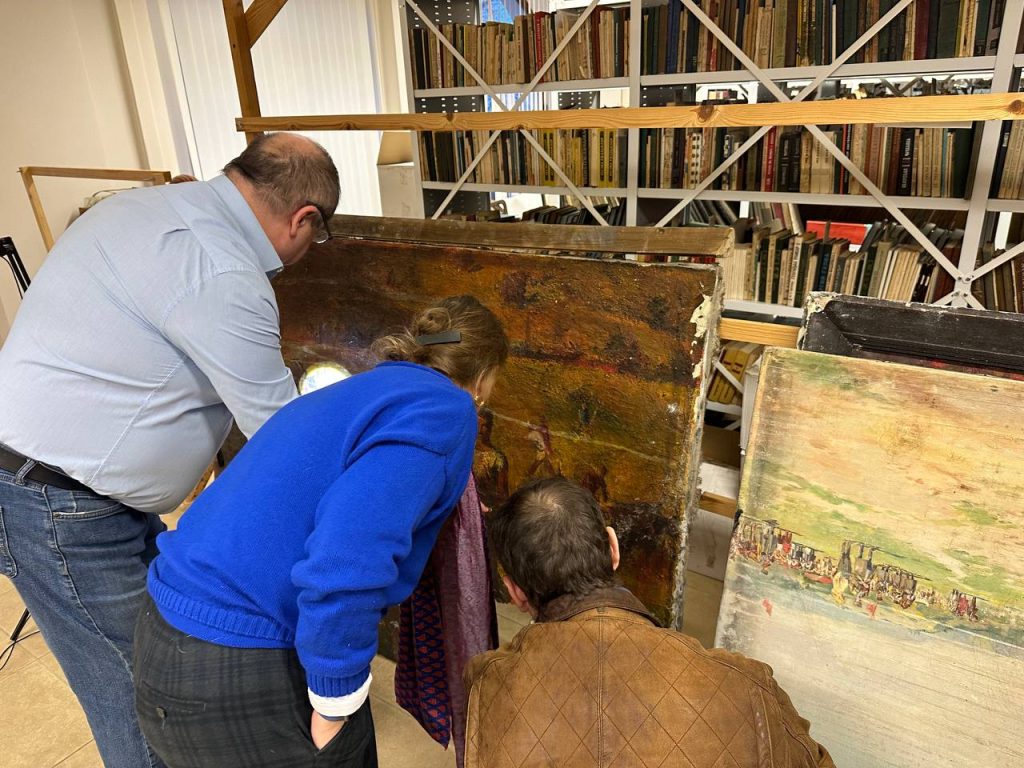
During the fire, about 150 works by Khuta Avidzba, Sergey Gablia, Sergey Sangulov, Vissarion Tsvizhba, Viktor Scheglov, and also 3 works by Varvara Bubnova were saved.
The task of the Russian restorers includes inspecting the items, cataloging them, photographing, and providing first aid, particularly applying preventive stickers. The Russian experts noted as a positive factor that the paintings were extinguished with water, not chemical means, which could have adversely affected their condition.
The article is prepared by the Sukhumi editorial team. The terms and toponyms used in the text, as well as opinions and ideas, express the personal position of the author of the article and do not always coincide with the views and position of JAMnews and individual employees. JAMnews reserves the right to delete comments posted under the publication that are considered offensive, threatening, inciting violence, or otherwise unacceptable from an ethical point of view.










